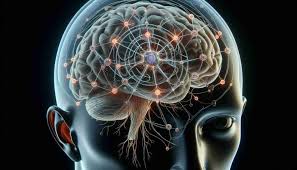CHANGE YOUR MIND THE SCIENTIFIC WAY
Neuroplasticity is essentially the idea that the brain changes due to learning and experience.
Engage your emotions
The more we emotionally invest in an action, the more we’re likely to remember it well. Research shows that the more positive our emotions are when we’re learning something, the more likely we are to retain the information. Our brains want to do things we enjoy, and especially things that elicit a release of dopamine – a hormone linked to motivation and reward. If you’re picking up a new habit, be enthusiastic about it and practice gratitude to increase your mood whilst you’re engaging in the habit.
Change your language
The words we speak are incredibly powerful, and can directly shape our brains. Words like ‘can’t’, ‘try’, or negative statements about ourselves can all make or break our ability to learn new skills or change our minds. Speaking negatively to ourselves can also release a stream of stress hormones like cortisol, which prevent us from being able to learn effectively. Switch ‘try’ to ‘will’ or ‘can’; change ‘can’t’ to ‘can’t yet’, and instead of statements like “I’ll never be able to achieve this”, change your language to “I’m open to the possibility of achieving this”.
Visualise
Visualisation and meditation are incredibly powerful, and are some of the most effective ways to create and strengthen neural pathways. Visualising movement for example, stimulates brain regions involved in movement, priming the brain so that we can move more efficiently. If you’re learning the piano, visualising your hands moving across the keys can make you better at playing the next time you sit down. If you’re a yoga teacher, you may already be in the practice of visualising your class sequence so it flows more easily as you teach. Joe Dispenza’s work involves visualising a positive future for yourself. As our thoughts are so intrinsically linked to our actions and experiences, it reasons that what we focus on will influence how our lives play out.
Use ‘triggers’
Habits and learning experiences are even more effective when we use external cues like our environment, a time of day, or a social situation. Walking into the bathroom in the morning is a ‘cue’ to brush your teeth. In the very same way, you can use these cues to make new neural pathways in the brain related to starting a meditation practice, eating healthily or drinking more water. The key is to do the action consistently in the same place or at the same time to strengthen these neural pathways.
Feed your brain
Our brains need a lot of fuel to simply go about everyday tasks, let alone learning new habits and creating new neural pathways. Some of the best brain foods include the omega 3s in fatty fish, the antioxidants in dark coloured fruits like blueberries or greens like broccoli, as well as pumpkin seeds, walnuts, turmeric, dark chocolate, eggs, and green tea. If you need a boost, the brain’s preferred source of fuel is glucose – a.k.a carbohydrates, so ensure you’re not excluding healthy carbs like root vegetables and fruit from your diet, as your brain needs them to function optimally.
Repeat
Remember – our neural pathways are strengthened the more we use them, and become ‘overgrown’ when we don’t. It really is a case of use it or lose it! Once you’ve chosen how you want to change your mind – whether by altering your beliefs and self-talk, learning a new skill or creating a habit – repeat it often. Studies show it can take between 18 to around 254 days to create an ingrained habit, so use the tips above and start changing your mind.

